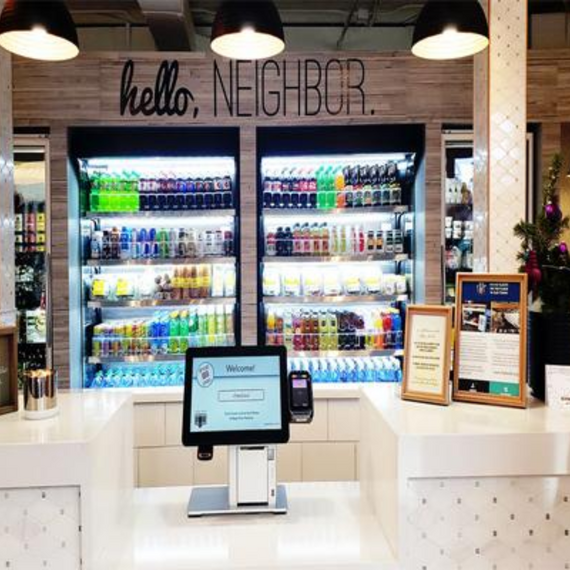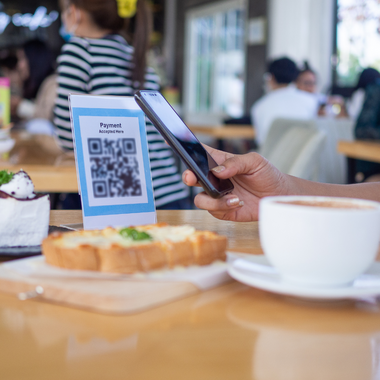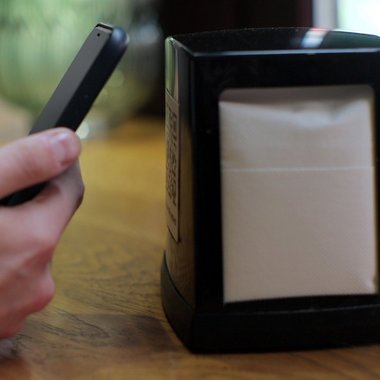
- Four minutes read
Are in-store invisible payments the future?
With Amazon Go looking to expand both in the US and UK, are we seeing a glimpse into the future of the in-store payments experience?
The date is January 22, 2018. It’s a brisk, surprisingly rainless Seattle morning. And people are queuing round the block, eagerly awaiting the opening of a new store that — ironically, given the extent of the queue — has made a deceptively simple, groundbreaking promise: ‘no lines, no checkout.’
The store in question was Amazon’s flagship checkout-free store, Amazon Go. And, it’s safe to say, the launch was a resounding success. Dubbed “the store of the future” by the likes of CNN, Reuters and the New York Times, it hogged headlines everywhere and captured consumers’ imaginations.
Invisible payments: a new dawn for in-store retail?
It’s barely been nine months since that cold January day, and the rumour mill hasn’t stopped turning. If anything, it’s gone into overdrive.
It’s thought — though the company refuses to confirm it — that Amazon plans to open another 3,000 Go stores across the US, a move that would boost revenue by approximately $6 billion by 2021.
More to the point, the expansion would make Amazon one of the largest retailers in the country and turn checkout-free shopping — or, as Amazon calls it, ‘Just Walk Out’ technology — into the new normal. The question is, are we ready for this sea change in the way we pay? And do consumers even want it?
Old habits die hard
Beyond the hype, Amazon Go has hit some unexpected teething problems. Swiping an app, picking what you need off the shelves and walking out the door sounds like the height of simplicity. But, it turns out, even the simplest tasks can become difficult when faced with centuries of ingrained behaviour.
Upon visiting the Seattle store, Loup Ventures — a research-focused venture capital firm — was surprised to note that: “What we didn’t necessarily expect is how many people would stop at the end, on their first trip or two, and ask, ‘Is it really OK if I just leave?’” Indeed, many customers have observed that buying from the store feels like stealing.
It’s tempting to dismiss this as an objection that’ll diminish with every new visit. But our latest Lost In Transaction research suggests there’s more beneath the surface than simple force of habit. Asked about their attitudes to invisible payments, 47% of our respondents said they worry about being charged for things they didn’t buy. 31% said they worried about controlling their spending and 28% said they worried about inadvertent purchases.
If anything, Amazon Go’s teething problems have resulted in people accidentally shoplifting, rather than being overcharged. But perception, as they say, is everything. And our findings suggest that, as much as they appreciate simple, fast and convenient checkout, abandoning interaction with payments involves a loss of control many consumers aren’t ready for as yet.
Out with friction… but security first
With the popularity of contactless and other cash-free payment methods on the rise, it may come as a surprise that customers aren’t prepared to take the next natural leap. But the truth is that, according to our latest Lost in Transaction research, even the popularity of these payment methods may have been overstated.
Case in point, only 3% of Americans and 19% of Canadians said they had used contactless in the previous month. Similarly, mobile wallets are yet to make an impact, with only 9% of people using them in-store.
But it’s not awareness of and appetite for quick and convenient payment technologies that are the problem. 40% of Americans and 58% of Canadians had tried contactless in 2017, and 30% of Americans and 40% of Canadians prefer to shop in stores that accept it. Rather, what’s stopping many consumers from making that fateful tap on the card reader is a growing concern with security.
This seems to be the case for the 62% of respondents who told us they worry contactless fraud is on the rise. Security concerns are also hampering mobile wallet adoption — 30% of respondents told us they worry about what would happen if their phone got lost or stolen.
However, as familiarity with more seamless payment methods continues to grow, we should expect consumer trepidation in the US to subside. This has already occurred in the UK, where contactless payments have been in the market for decade; over 50% of UK consumers surveyed for Lost in Transaction had made a payment using contactless in the past month and similar research indicates that contactless card usage has surpassed chip and pin payments for the first time. By switching from chip and pin to contactless transactions, UK consumers have demonstrated their preference for more seamless payment systems, given time in the market to get comfortable with it we should expect the same from consumers in North America.
Finding the right balance
We’re often told consumers want speed and convenience at all costs. But, clearly, this isn’t the full picture. Our research confirms consumers will actively avoid payment methods they consider risky. They won’t be persuaded by convenience alone.
Concepts such as Amazon Go may seem like the wave of the future. But, as great as it might seem on paper to dash in and out of a store without having to wait in a queue, there’s a balance to be struck. To turn the recipe into a more enticing dish, in-store invisible payments must feel as secure as ever.
This will come with familiarity, but also from acknowledging consumer concerns and build suitable products accordingly. For example, Amazon is combatting consumer concerns about being charged for something they didn’t buy by making it simple and quick to request an adjustment of a Go bill if the consumer feels they have been charged incorrectly. Breaking down these barriers to adoption through smart product development will only accelerate the pace at which this new type of purchasing becomes mainstream.
Want more insight about payment trends in 2018 and beyond? Download our Lost In Transaction report.




